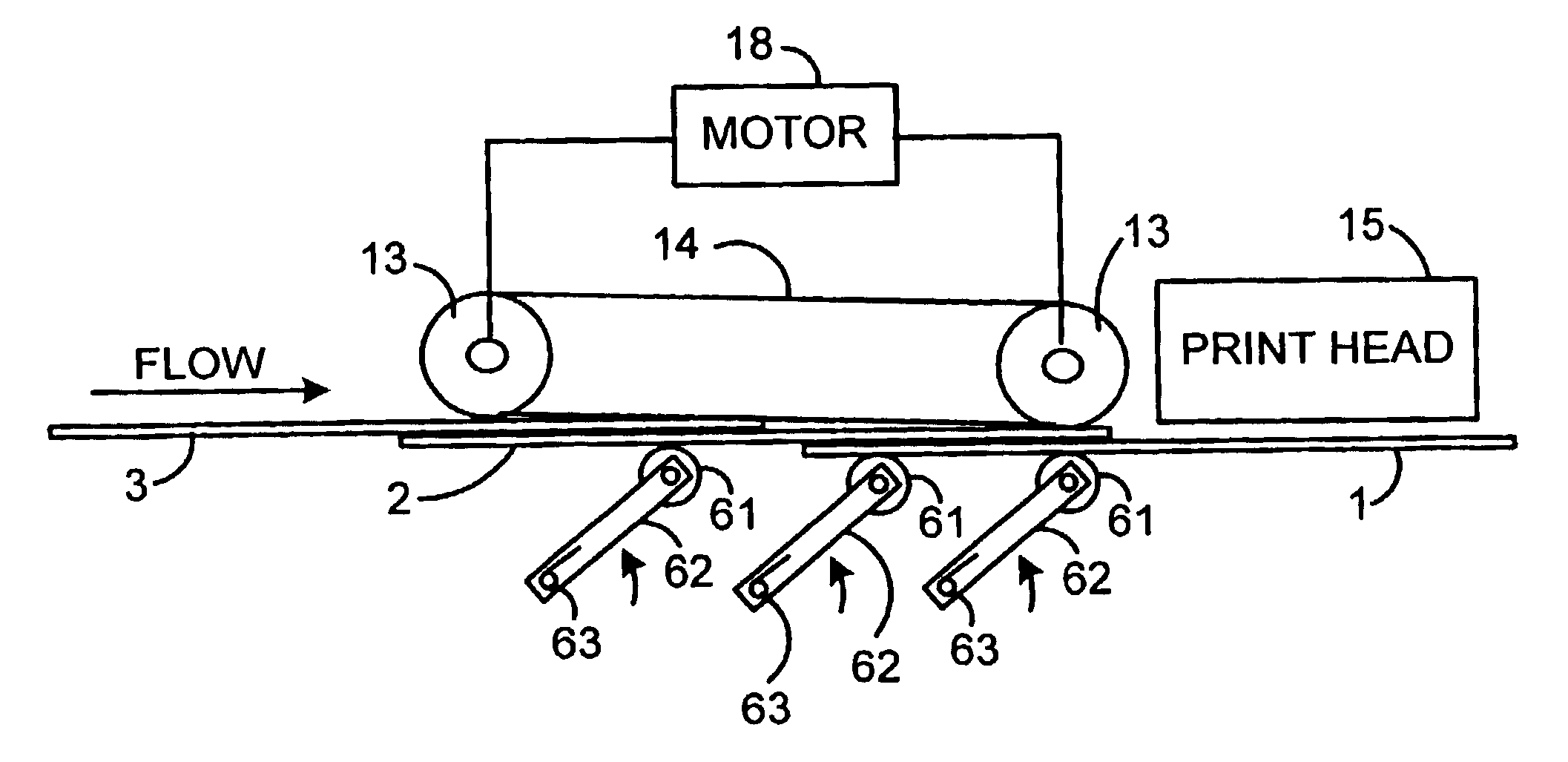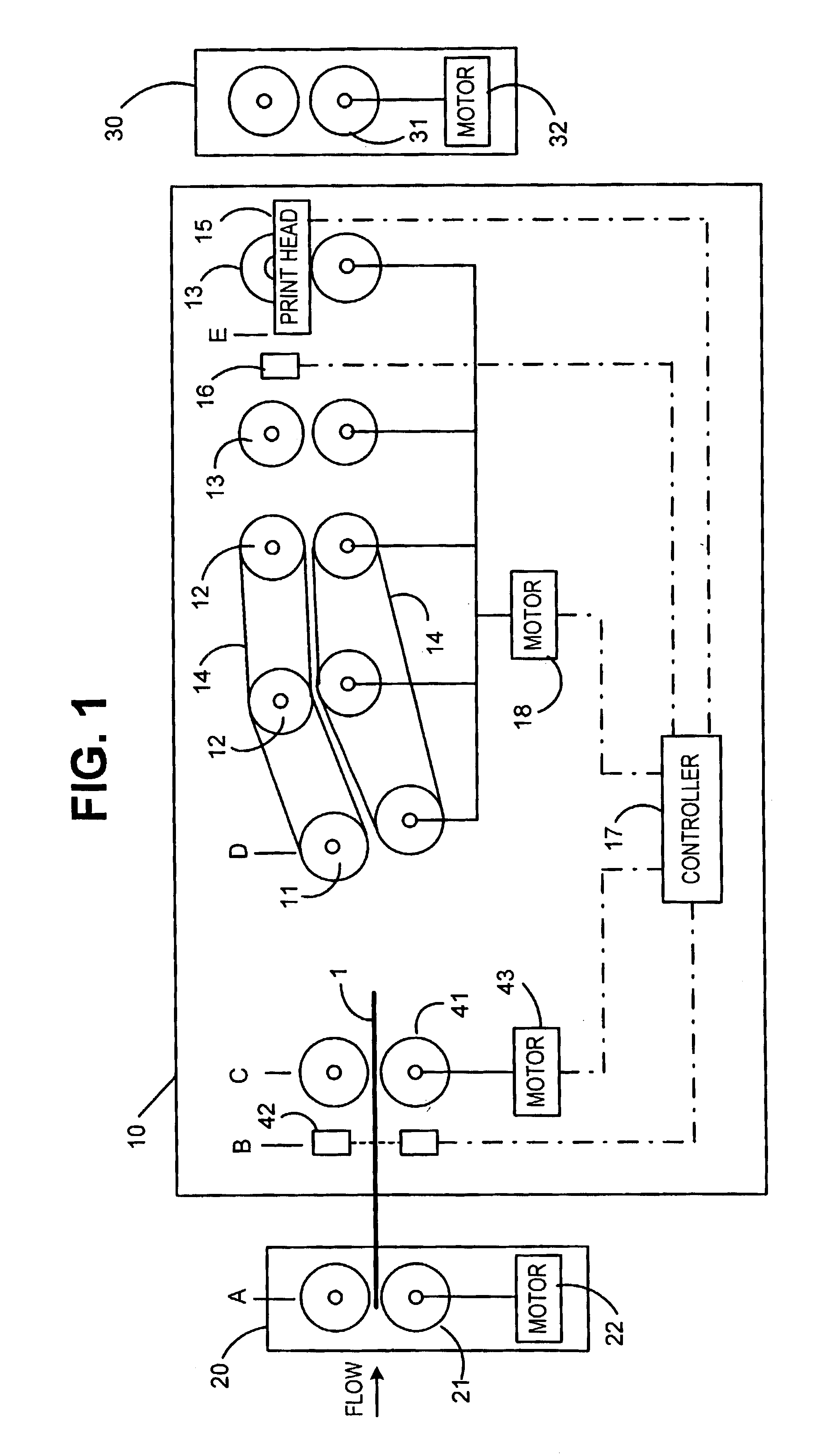Method and system for high speed digital metering using overlapping envelopes
a digital metering and envelope technology, applied in the field of high-speed digital metering using overlapping envelopes, can solve the problems of system modules, envelopes, and modules not having time to perform their functions, and achieve the effect of high processing speed
- Summary
- Abstract
- Description
- Claims
- Application Information
AI Technical Summary
Benefits of technology
Problems solved by technology
Method used
Image
Examples
Embodiment Construction
[0027]As seen in FIG. 1, the present invention includes a postage printing module 10 positioned between an upstream module 20 and a downstream module 30. Upstream and downstream modules 20 and 30 can be any kinds of modules in an inserter output subsystem. Typically the upstream module 20 could include a device for wetting and sealing an envelope flap. Downstream module 30 could be a module for sorting envelopes into appropriate output bins or a stacker module.
[0028]Postage printing module 10, upstream module 20, and downstream module 30, all include transport mechanisms for moving an envelope 1 along the processing flow path. In the depicted embodiment, the upstream module 20 includes nip rollers 21 driven by motor 22. Similarly, the downstream module 30 includes a transport comprised of nip rollers 31 driven by motor 32. In the preferred embodiment, rollers 21 and 31 are hard-nip rollers to minimize variation. As an alternative to nip rollers, the transport mechanism and transport...
PUM
 Login to View More
Login to View More Abstract
Description
Claims
Application Information
 Login to View More
Login to View More - R&D
- Intellectual Property
- Life Sciences
- Materials
- Tech Scout
- Unparalleled Data Quality
- Higher Quality Content
- 60% Fewer Hallucinations
Browse by: Latest US Patents, China's latest patents, Technical Efficacy Thesaurus, Application Domain, Technology Topic, Popular Technical Reports.
© 2025 PatSnap. All rights reserved.Legal|Privacy policy|Modern Slavery Act Transparency Statement|Sitemap|About US| Contact US: help@patsnap.com



